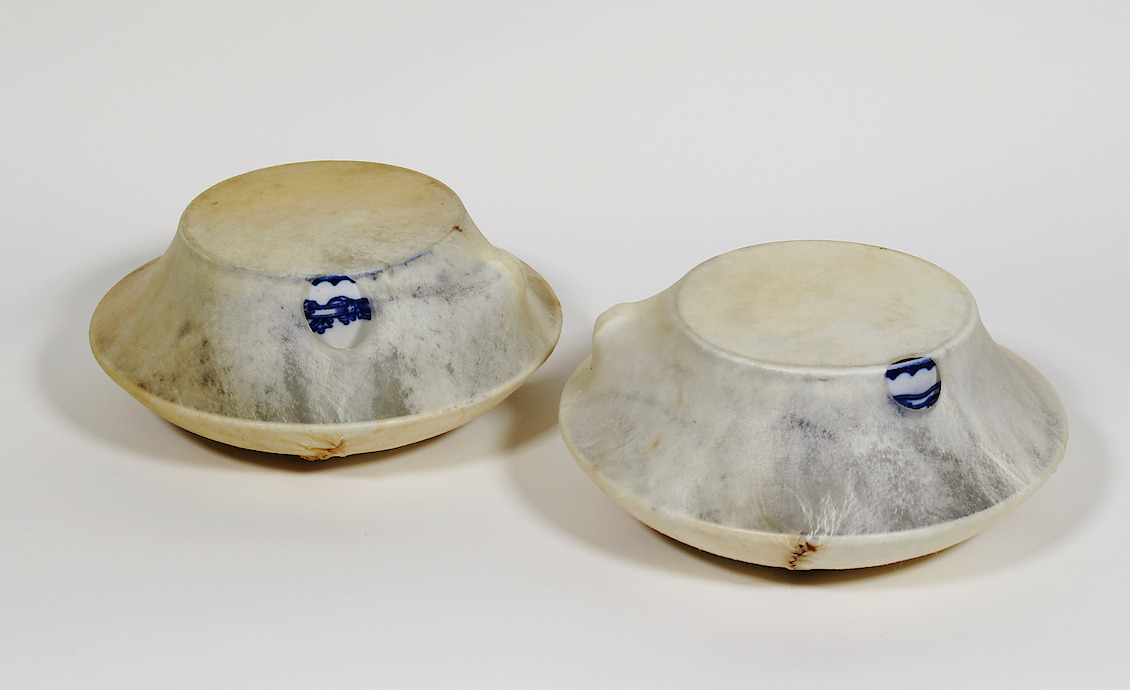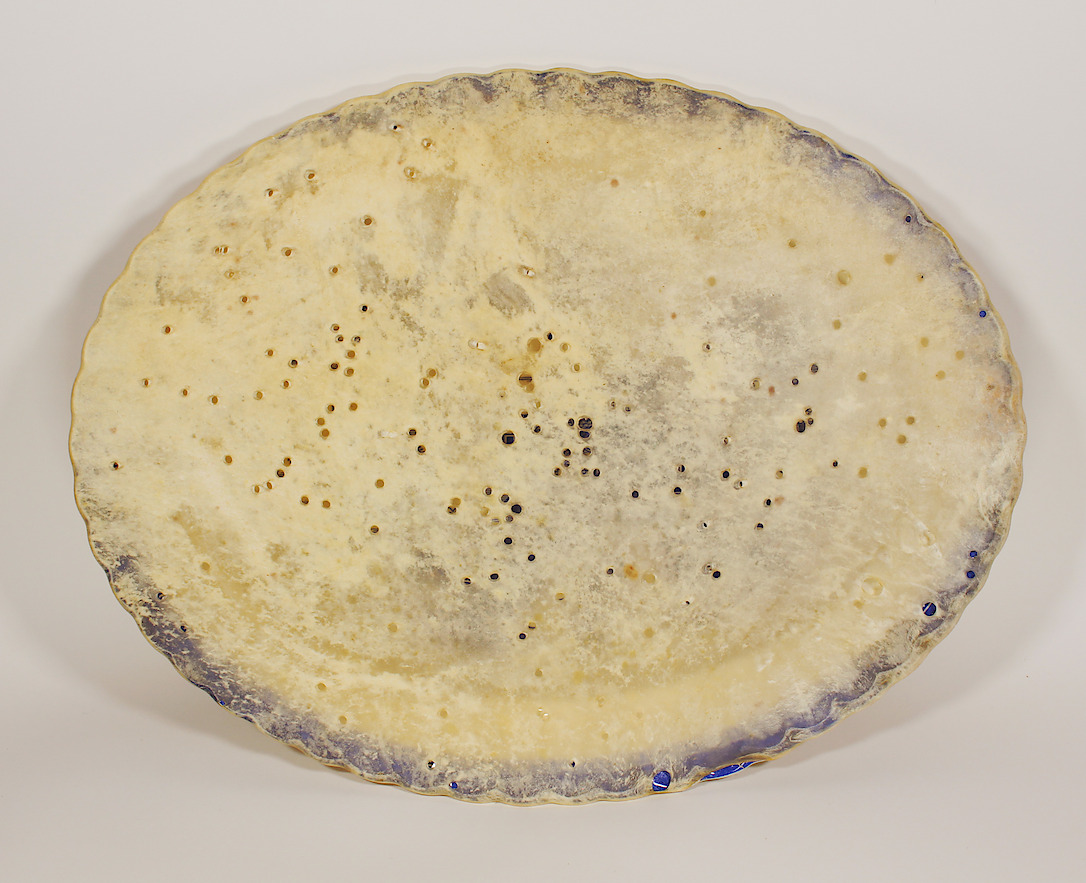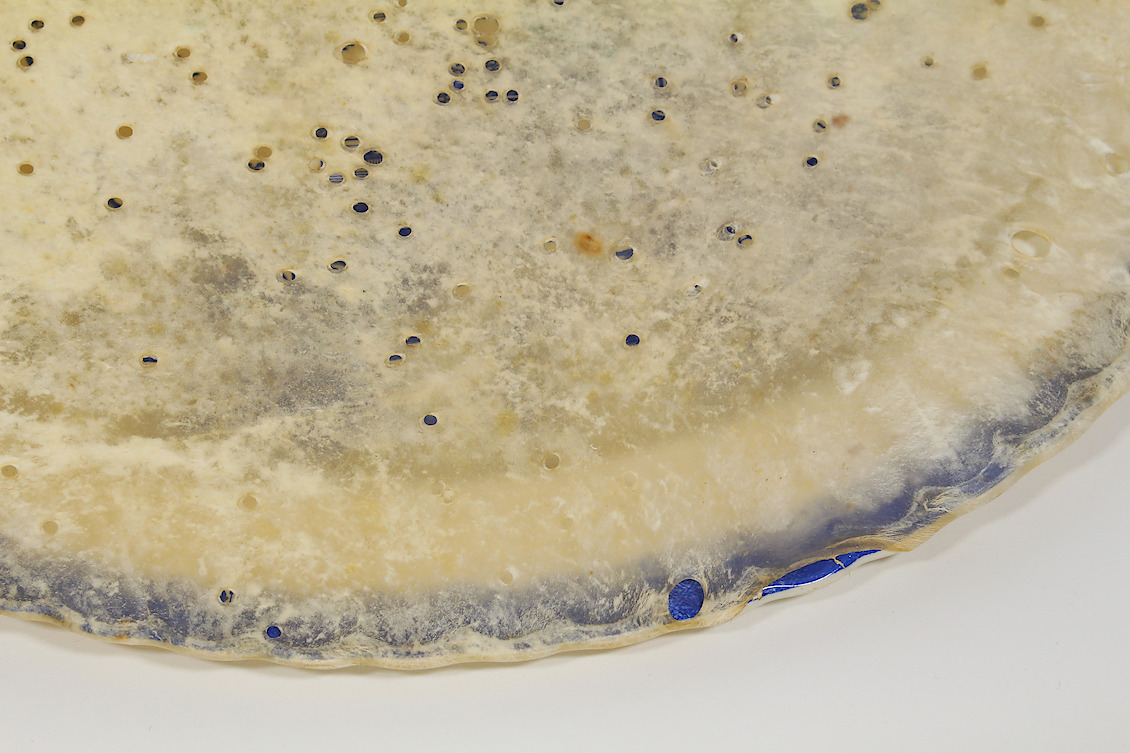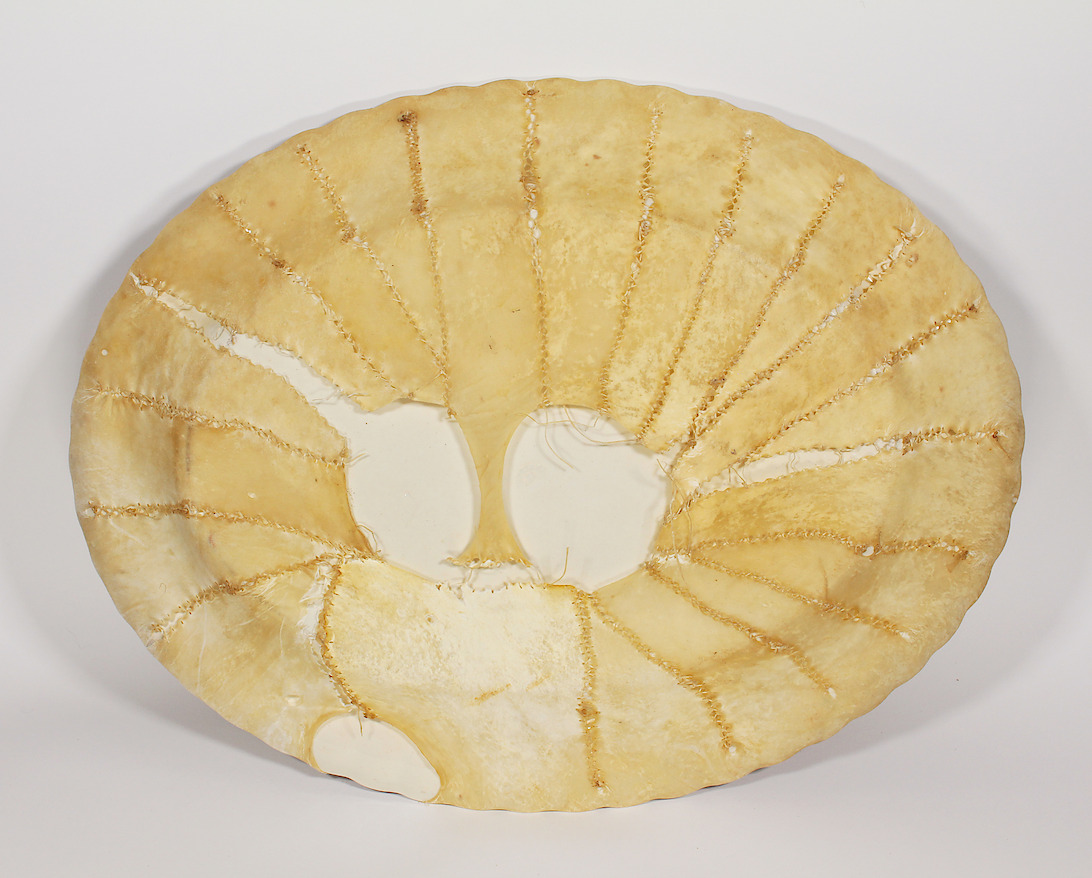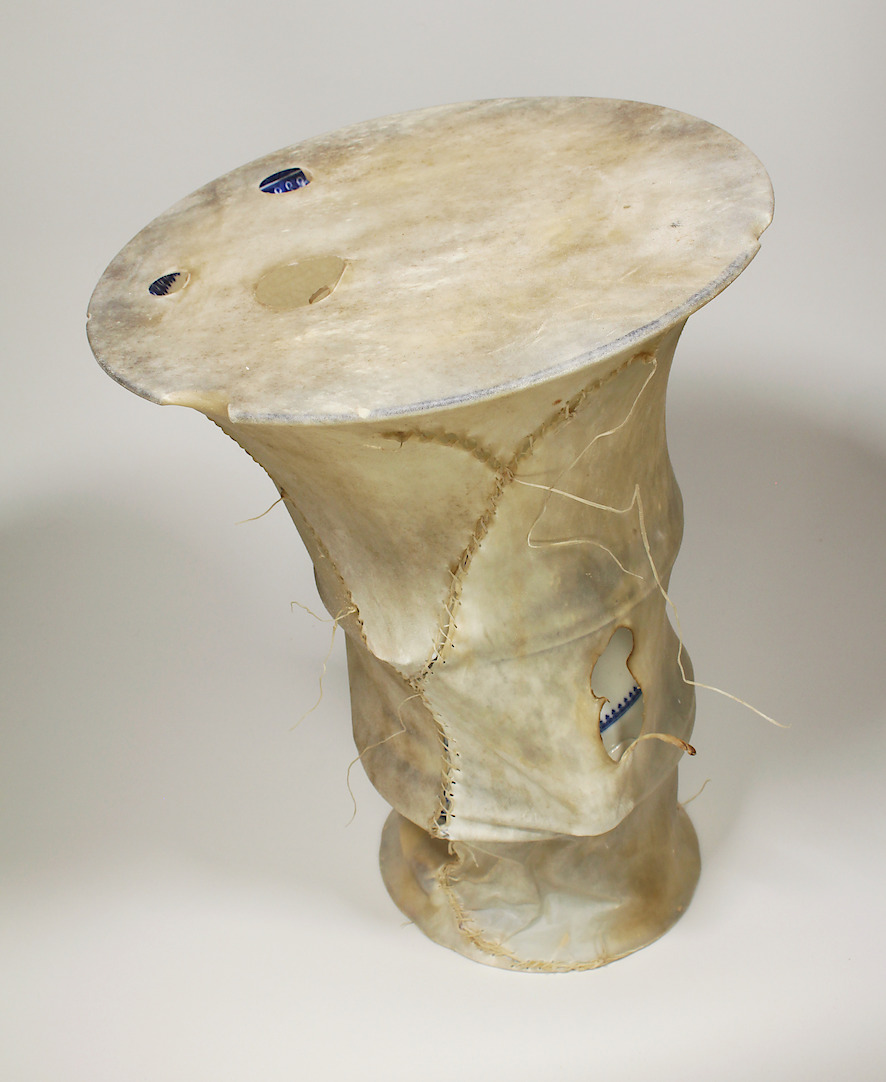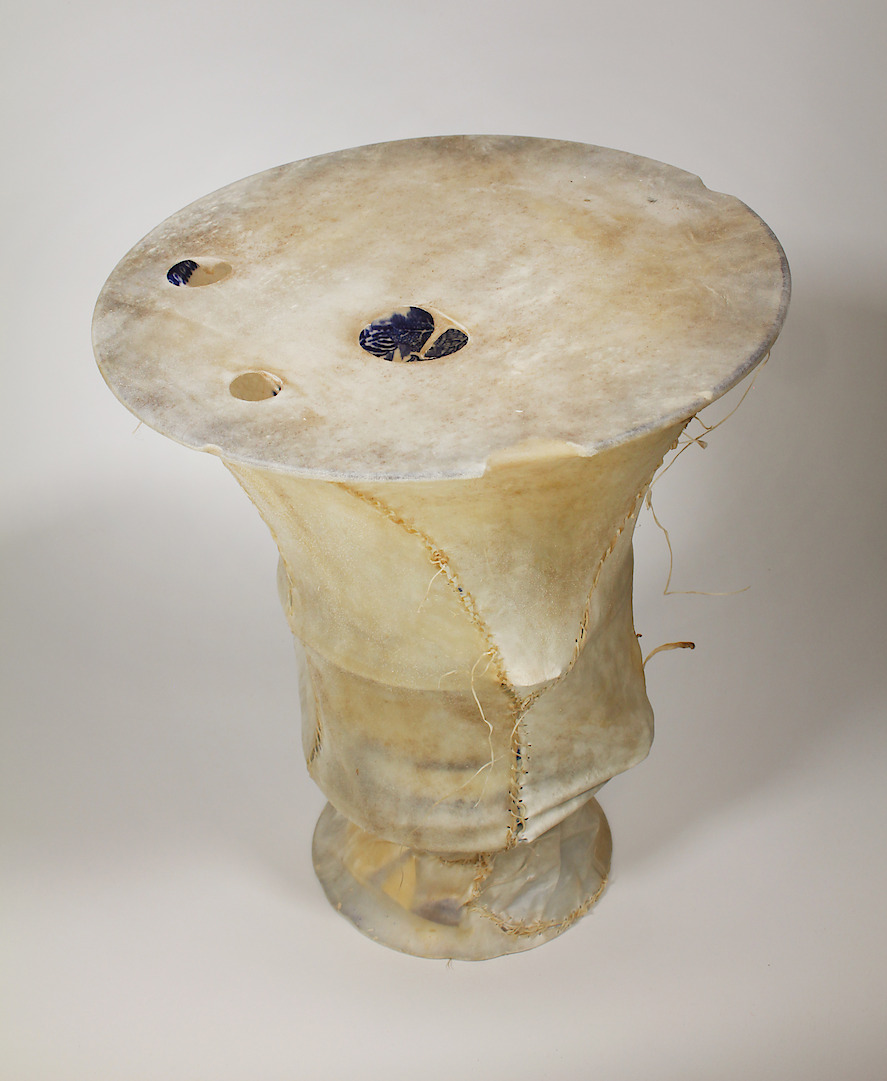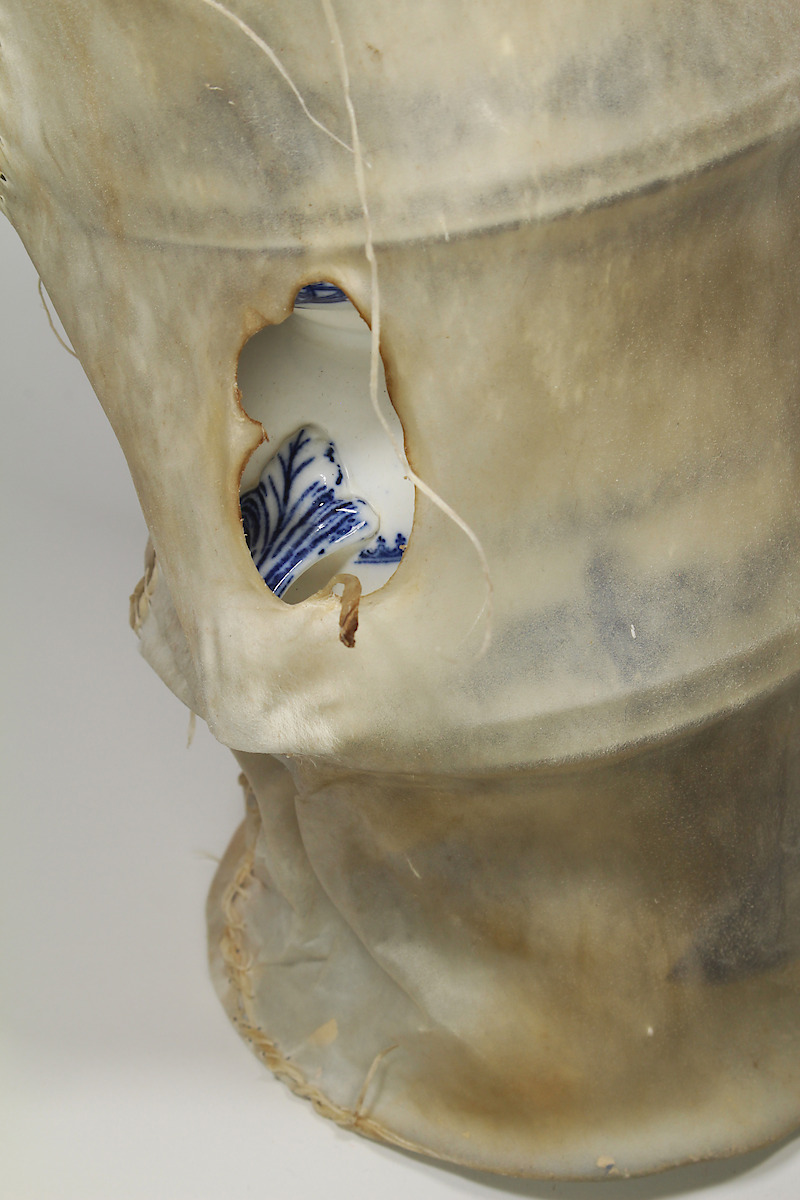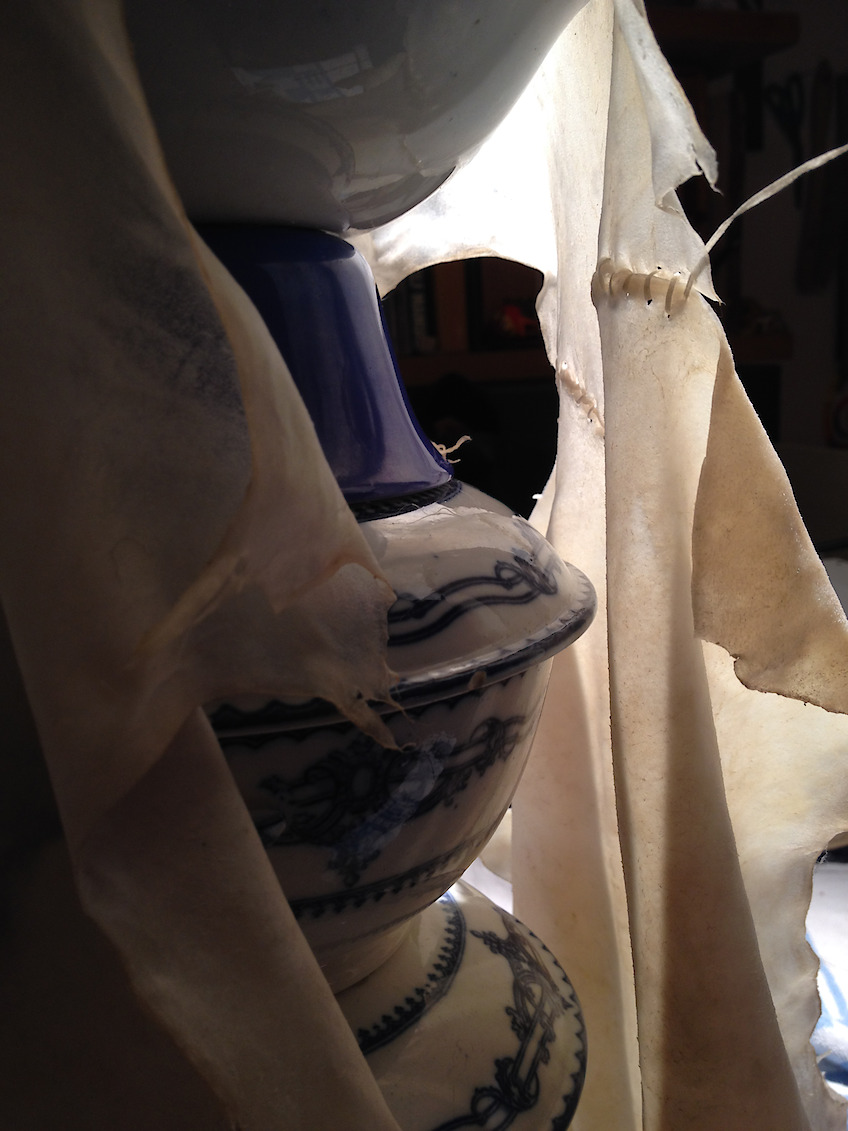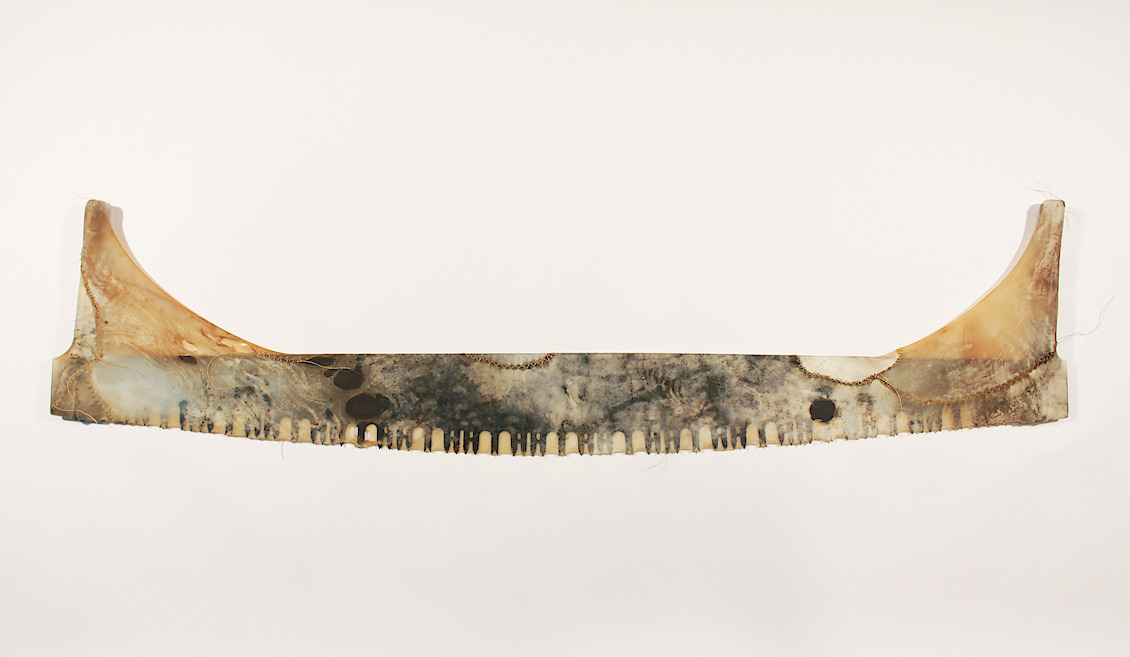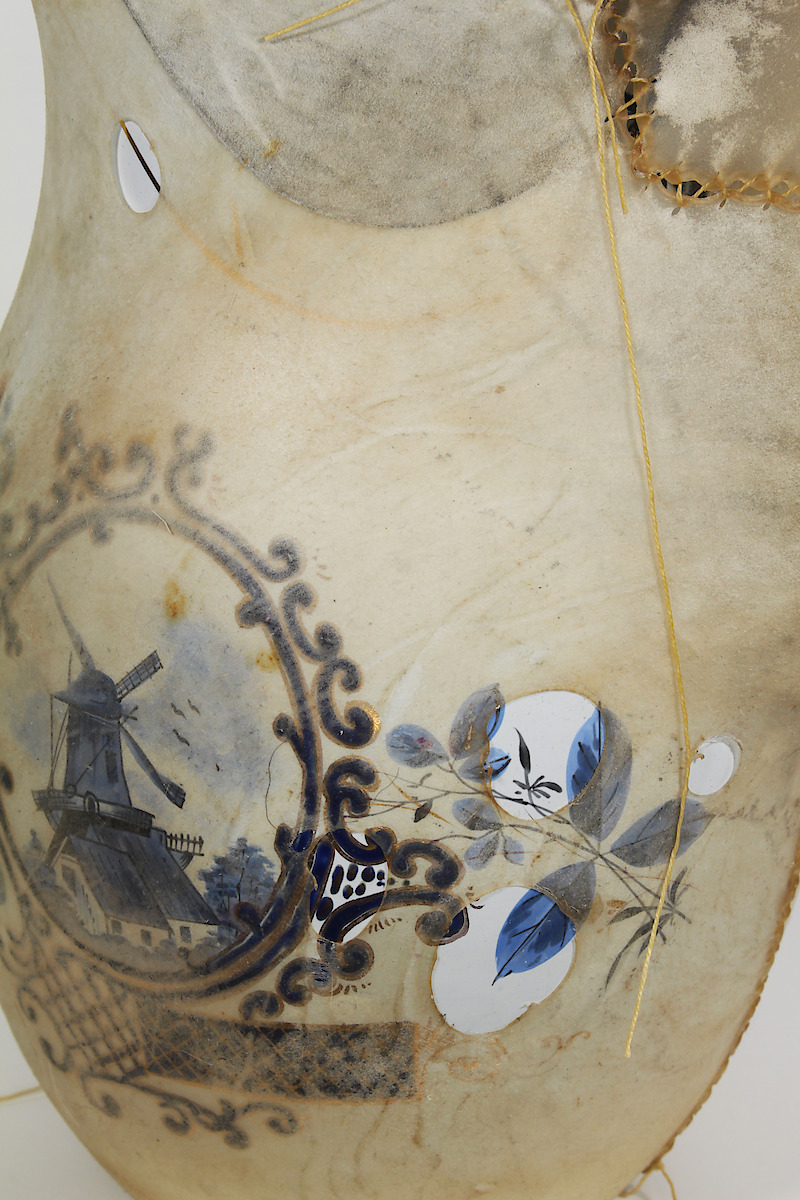Rawhide Works, 2016
Sculpture
raw deer hide
In these works, raw deer hide is stretched and stitched over a series of objects from teacups and bowls to a large crosscut saw. All of the objects are ancestral heirlooms that came from a cottage property in Muskoka that was owned by my family for 115 years and sold by my father in 2017. The deer rawhide comes from hides that hunters pass on to Javier, my spouse, who scrapes and prepares them for brain tanning. In doing so, we can see how each deer was killed, either by gun shot, arrow, or buckshot (as seen in the piece Buckshot).
The hides were wet and flexible when I stitched them over the objects. As they dried, they tightened, forming a taught covering that sometimes applied so much pressure that the ceramic items cracked or broke. In the pieces called Skin and Bones, the saucers cracked with the pressure of the teacup bearing down upon them, yet they were also held in place by the strong rawhide encasing that developed as it dried. These particular pieces are drums that can be sounded and that also continue to emit noise as they adapt to the temperate and humidity around them.
